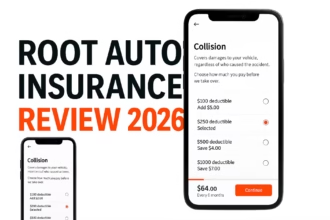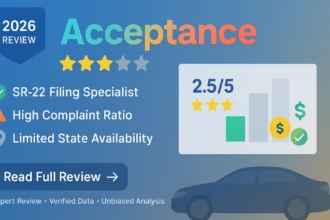Introduction

The debate between active and passive investing has intensified in recent years as more Americans seek effective ways to grow their wealth. With the U.S. stock market experiencing significant volatility and technological advances transforming investment approaches, understanding these two fundamental strategies has never been more crucial for investors.
This comprehensive guide explores the key differences between active and passive investing, helping you make informed decisions about your investment strategy in today’s complex financial landscape.
Understanding the Basics: Active vs. Passive Investing
What is Active Investing?
Active investing involves a hands-on approach where investors or portfolio managers actively make investment decisions to outperform the market. This strategy requires continuous monitoring of market conditions, extensive research, and frequent trading to capitalize on short-term price fluctuations.
What is Passive Investing?
Passive investing takes a long-term, buy-and-hold approach, typically through index funds that track specific market benchmarks. Instead of trying to beat the market, passive investors aim to match market returns while minimizing costs and portfolio turnover.
The Rise of Passive Investing in the United States
Passive investing has seen remarkable growth in the U.S. market. According to recent data, approximately 38% of global assets are now invested in passive index funds, with this percentage growing by roughly 2% annually since 2015. This shift represents a fundamental change in how Americans approach investing.
Historical Context
The passive investing revolution began in 1976 when John Bogle launched Vanguard’s 500 Index Fund, the first passive index fund available to retail investors. Since then, passive investing has transformed from a controversial concept to a mainstream investment strategy embraced by millions of Americans.
Active Investing: A Deeper Dive
Key Characteristics of Active Investing
Continuous Market Analysis
- Real-time monitoring of market conditions
- Fundamental and technical analysis of securities
- Economic and industry research
Professional Management
- Dedicated portfolio managers
- Teams of analysts
- Sophisticated trading strategies
Flexible Investment Approach
- Ability to adjust to market conditions
- Tactical asset allocation
- Risk management techniques
Advantages of Active Investing
Potential for Higher Returns
- Opportunity to outperform market averages
- Ability to capitalize on market inefficiencies
- Flexibility to take advantage of short-term opportunities
Risk Management
- Capacity to reduce exposure during market downturns
- Implementation of hedging strategies
- Active portfolio rebalancing
Customization
- Tailored investment strategies
- Tax-loss harvesting opportunities
- Specific investment objectives alignment
Disadvantages of Active Investing
Higher Costs
- Management fees (average 0.68% for actively managed equity funds)
- Transaction costs
- Research and analysis expenses
Increased Risk
- Manager decision risk
- Timing risk
- Higher portfolio turnover
Tax Implications
- More frequent taxable events
- Higher short-term capital gains
- Potential tax inefficiency
Passive Investing: A Comprehensive Analysis
Key Characteristics of Passive Investing
Index Tracking
- Replication of market benchmarks
- Broad market exposure
- Systematic investment approach
Long-term Focus
- Buy-and-hold strategy
- Regular rebalancing
- Dividend reinvestment
Cost Efficiency
- Low expense ratios (average 0.06% for passive equity funds)
- Minimal transaction costs
- Reduced operational expenses
Advantages of Passive Investing
Lower Costs
- Reduced management fees
- Lower transaction costs
- Minimal research expenses
Tax Efficiency
- Lower portfolio turnover
- Fewer taxable events
- Long-term capital gains treatment
Diversification
- Broad market exposure
- Automatic sector allocation
- Risk distribution
Disadvantages of Passive Investing
Limited Flexibility
- No downside protection
- Cannot take advantage of market inefficiencies
- Fixed investment approach
Market-Linked Returns
- Cannot outperform the market
- Full exposure to market downturns
- Index-tracking errors
Limited Investment Options
- Restricted to index components
- No ability to avoid troubled sectors
- Mechanical investment process
Performance Comparison: Active vs. Passive

Historical Performance Data
Recent studies have shown that over the 20-year period ended 2022, only about 4.1% of professionally managed portfolios in the U.S. consistently outperformed their benchmarks. This statistic highlights the challenges active managers face in delivering superior returns over extended periods.
Risk-Adjusted Returns
When comparing active and passive strategies, it’s essential to consider risk-adjusted returns:
Active Strategies
- Higher potential returns
- Greater volatility
- Higher risk exposure
Passive Strategies
- Market-level returns
- Lower volatility
- Systematic risk exposure
Choosing the Right Strategy for Your Investment Goals
Factors to Consider
Investment Timeline
- Short-term vs. long-term goals
- Retirement planning
- Wealth accumulation objectives
Risk Tolerance
- Conservative vs. aggressive approach
- Income needs
- Market volatility tolerance
Cost Sensitivity
- Fee impact on returns
- Transaction cost considerations
- Tax efficiency requirements
The Hybrid Approach
Many investors find success in combining active and passive strategies:
Core-Satellite Strategy
- Passive core holdings
- Active satellite positions
- Risk-controlled exposure
Asset Class Allocation
- Passive for efficient markets
- Active for inefficient markets
- Strategic diversification
Implementation Strategies
Getting Started with Passive Investing
Choose Your Investment Vehicles
- Index mutual funds
- Exchange-traded funds (ETFs)
- Target-date funds
Set Up Regular Contributions
- Dollar-cost averaging
- Automatic investment plans
- Dividend reinvestment
Monitor and Rebalance
- Annual portfolio review
- Periodic rebalancing
- Investment goal alignment
Implementing Active Strategies
Research and Analysis
- Fundamental analysis
- Technical analysis
- Market timing strategies
Risk Management
- Position sizing
- Stop-loss orders
- Portfolio hedging
Performance Monitoring
- Regular performance review
- Benchmark comparison
- Strategy adjustment
Market Trends and Future Outlook
Current Market Dynamics
The investment landscape continues to evolve with:
Technology Impact
- Automated trading platforms
- Artificial intelligence integration
- Enhanced analytical tools
Regulatory Changes
- Fiduciary requirements
- Fee transparency
- Investment product oversight
Market Structure Evolution
- ETF innovation
- Alternative investments
- Sustainable investing options
Conclusion
The choice between active and passive investing depends on various factors, including your financial goals, risk tolerance, and investment timeline. While passive investing has gained significant popularity due to its cost-effectiveness and consistent returns, active investing maintains its place in the market, particularly for sophisticated investors seeking outperformance opportunities.
Consider consulting with a financial advisor to determine the most appropriate strategy for your specific situation and investment objectives.
Frequently Asked Questions
Which strategy is better for beginners?
Passive investing is generally recommended for beginners due to its simplicity, lower costs, and reduced risk of making emotional investment decisions.
Can I combine active and passive strategies?
Yes, many investors use a hybrid approach, maintaining a passive core portfolio while actively managing a portion for potential outperformance.
How much money do I need to start investing?
Many index funds and ETFs have low minimum investment requirements, sometimes as little as $1, making passive investing accessible to most investors.
What are the tax implications of each strategy?
Passive investing typically generates fewer taxable events due to lower turnover, while active investing may result in more frequent tax obligations.
How often should I review my investment strategy?
Regardless of strategy, annual portfolio reviews are recommended, with more frequent monitoring for active approaches.
This article was last updated on February 21, 2024, with the latest market data and investment trends.





